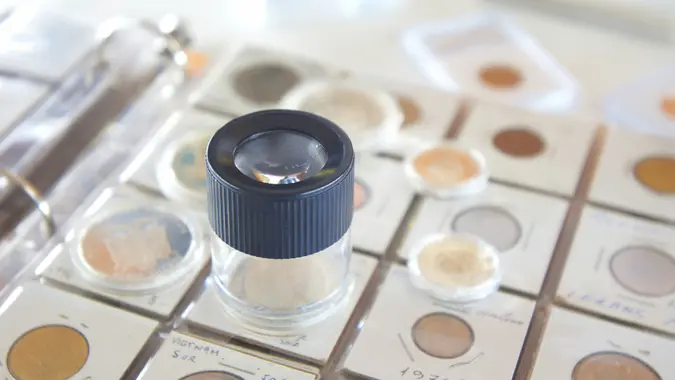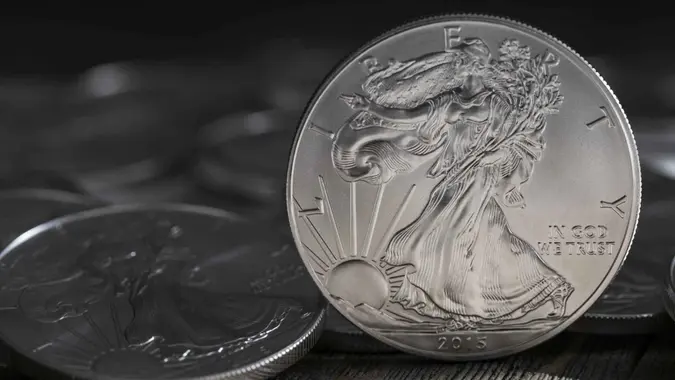Here’s the No. 1 Thing Rich Americans Are Splurging On (It’s Not Cars or Watches)

Commitment to Our Readers
GOBankingRates' editorial team is committed to bringing you unbiased reviews and information. We use data-driven methodologies to evaluate financial products and services - our reviews and ratings are not influenced by advertisers. You can read more about our editorial guidelines and our products and services review methodology.

20 Years
Helping You Live Richer

Reviewed
by Experts

Trusted by
Millions of Readers
Many of us fantasize about the things we would spend money on if we were rich. Maybe it’s a Ferrari or a Birkin, or maybe it’s a Rolex or diamond jewelry from Tiffany’s. But it turns out that the people who can afford to buy these things aren’t spending their money this way anymore.
A recent report from Moody’s chief economist Mark Zandi found that the wealthiest Americans are splurging on experiences — not tangible items.
“It’s just a shift in preferences,” Zandi told The Street. “They’re out doing things, so that’s where the money is. They’re going to see Taylor Swift for $2,000 a pop. They’re not buying Rolex watches.”
Here’s a closer look at why there’s been such a shift in spending, and how to determine the best ways to splurge if you’re not a member of the 1%.
The Pandemic Sparked a Change in Spending Behavior
During the height of the COVID-19 pandemic, even the rich weren’t immune from the lockdowns and travel bans (for the most part), so the shift in spending could be due to a feeling that they need to make up for lost time.
“While before the pandemic it might have been second nature to just buy the new car or add to your watch collection, now I think people are realizing that experiences are really the things that provide the biggest benefit to them,” said Matt Mancini, wealth planning team leader at Wilmington Trust. “The ultra-wealthy are able to provide themselves with memories instead of a tangible item by including their family and close friends in personalized experiences. They’ve prioritized memories over objects.”
Mancini, who works with ultra-high-net-worth clients, has seen these shifts firsthand.
“We’ve been seeing a lot of spending on travel, but more so travel with a purpose, like family retreats, or to celebrate a milestone in the family with destination birthdays, graduations or retirement [celebrations], for example,” he said.
“Entertainment experiences, [such as] boat tours or paying for a live band, have been popular,” Mancini continued. “Additionally, staying abroad and renting luxury villas for an extended period has been popular with the ultra-wealthy lately. Finally, we have been seeing ultra-wealthy clients be more open to making large gifts to their family members while they are still alive, as opposed to leaving it to them in their will, so they can take pleasure in watching their family members enjoy the gift.”
How To Determine What’s Worth a Splurge
When you have a lot of money to blow, spending on big vacations or experiences can just be a drop in the bucket. But if you’re not a member of the 1%, it’s important to be more mindful about any splurges you make. However, that doesn’t mean you should never splurge — you just have to plan for it.
“The first step is to have a comprehensive financial plan to help determine what a sustainable spending level is,” Mancini said. “This plan should incorporate all of your living expenses and financial goals. From there, those splurges can be modeled in to illustrate the impact they could have on the sustainability of your plan.”
He continued, “For those who are still working and saving towards retirement, I like to suggest following the ’50/30/20 rule’ — 50% of your income should go towards needs, 30% towards wants and 20% towards savings. There will be deviations from this; however, it is a general rule of thumb as a starting point. Everyone’s situation is different, so it helps to plan out the long-term impact of a short-term splurge.”
If you can keep your splurge within that 30% bucket without derailing your savings or jeopardizing your ability to cover other expenses, you should be OK to go for it.
 Written by
Written by  Edited by
Edited by 

























